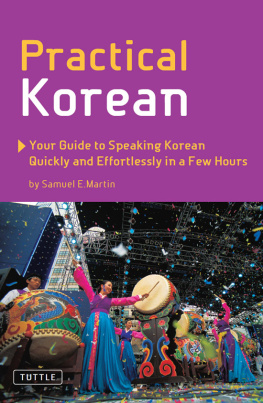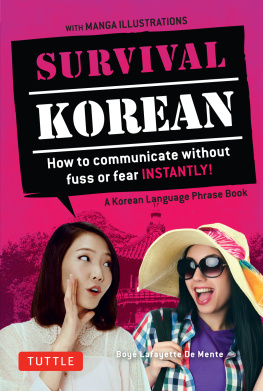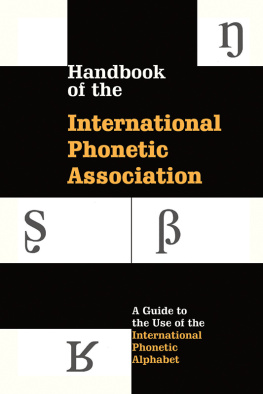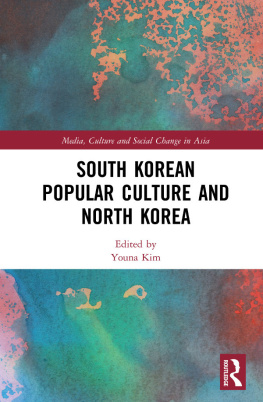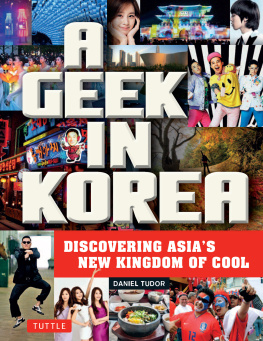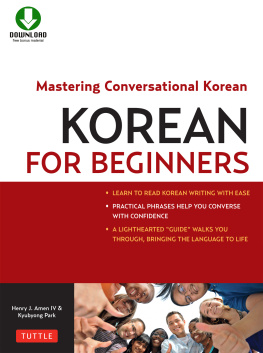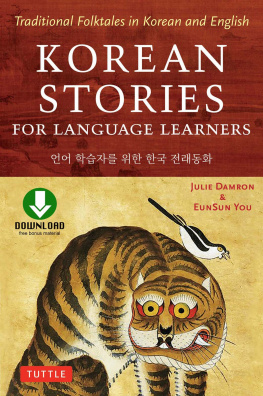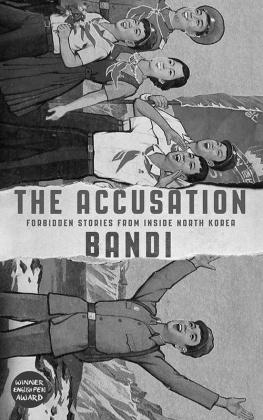Hangeul
Koreas Unique Alphabet
KOREA ESSENTIALS No. 1
Hangeul: Koreas Unique Alphabet Copyright 2010 by The Korea Foundation All Rights Reserved.
No part of this book may be reproduced or utilized in any form or by any means without the written permission of the publisher.
First Published in 2010 by Seoul Selection B1 Korean Publishers Association Bldg., 105-2 Sagan-dong, Jongno-gu, Seoul 110-190, Korea Phone: (82-2) 734-9567
Fax: (82-2) 734-9562
Email:
Website: www.seoulselection.com
ISBN: 978-1-62412-032-9
Because the speech of this country is different from that of China, [the spoken language] doesnt match the [Chinese] letters. Therefore, even if the ignorant want to communicate, many of them in the end cannot state their concerns. Saddened by this, I have [had] 28 letters newly made. It is my wish that every man may easily learn these letters and that [they] be convenient for daily use.
From the Hunminjeongeum (Proper Sounds for the Instruction of the People), 1446
Contents
INTRODUCTION
Writing is a cornerstone of civilization, a crucial invention that better allows peoples to accumulate and pass down knowledge and preserve cultures. It is a quintessentially human invention, but not a universal one: according to Ethnologue: Languages of the World, there are currently some 6,909 living languages in the world, yet only a minority of these are written, and of these just a handful have their own unique writing systems.
Hangeul, the indigenous writing system of Korea, is one of them. Promulgated in 1446, Hangeul is an ingenious system that utilizes forward-thinking and scientific linguistic theories and principles of Korean traditional culture to perfectly express the sounds of the Korean language. Invented by the brilliant King Sejong the Great, the alphabet has been widely lauded by scholars the world over for its advanced phonetic system and ease of use. Noted linguist Geoffrey Sampson, in his work Writing Systems: A Linguistic Introduction, went as far as to say, Whether or not it is ultimately the best of all conceivable scripts for Korean, Hangeul must unquestionably rank as one of the great intellectual achievements of humankind.
This book will examine the unique characteristics of the Hangeul writing system and its impact on Korean society. We will first look at why many scholars regard Hangeul as the worlds preeminent writing system. We will then examine the structure of the alphabet, exploring the linguistic and philosophical concepts that underlie it. We will survey the historical process by which Hangeul was invented and take an in-depth look at King Sejong the Great, the Korean king widely credited with the creation of the writing system. After this, we will canvass the subsequent development of the alphabet over the ensuing centuries and study its impact on Korean culture and society. Lastly, we will observe how Hangeul has helped promote the use of information technology in Korea and look at the myriad ways in which the writing system inspires Korean culture and art, including genres like fashion and dance.


W erner Sasse, a German linguist and former professor at the Universitt Hamburg, called the Korean writing system of Hangeul the worlds greatest writing system, devised on a foundation of traditional philosophical principles and scientific theories. Indeed, Sasse is just one of many scholars who have praised Koreas unique writing system. British linguist Geoffrey Sampson declared Hangeul to be a featural writing system and the most scientifically based of all writing systems. Dutch linguist Howard F. Vos also lauded Hangeul as the finest writing system in the world. Umeda Hiroyuki, of Japans Reitaku University, has said that Hangeul is the most advanced phonemic writing system in the world and a featural writing system that is rated a step above the Roman script.
Why is so much praise heaped upon an alphabet created six centuries ago in a small East Asian kingdom? What are the characteristics of Hangeul that make it so special?
RATIONAL STRUCTURE
Hangeul clearly differs from other writing systems in that the principles of both its creation and its intended usage were systematically established from the outset. As such, Hangeul features a highly rational structure that makes it easy for anyone in the world to learn and use. Most other alphabetic writing systems are the result of centuries of gradual evolution, and thus are not as systematically and rationally organized.
In Hangeul, the basic consonants take their shape from the configuration of the speech organs used for their articulation, while consonants expressing lenis, aspirated, and fortis sounds were created with intuitive and expressive shapes. These characteristics are truly extraordinary when viewed from the perspective of modern linguistic theory.

ALPHABETS AROUND THE WORLD
The most widely used writing system today is the Roman script. Also called the Latin script, it is used in Western and Northern Europe, North and South America, Australia, various countries in Africa that were once the colonies of European powers, and other areas. Recently, Southeast Asian nations such as Vietnam, Indonesia, and Malaysia, as well as other countries like Turkey, have adopted the Roman script as a replacement for or supplement to their traditional writing system. The Roman scripts growing worldwide usage is due in part to the fact that, as a phonetic writing system, it is relatively easy to learn and write; furthermore, the global expansion of Western culture over the past several centuries has also contributed much to its pervasive influence.
Other writing systems used by large numbers of people include Cyrillic, Indian, and Arabic script, as well as Chinese characters. Cyrillic script, like Roman script, is known to have originated from ancient Greek script, and is used in nations of the former Soviet Union, including Russia. Other than Vietnam, Indonesia, and Malaysia, most Southeast Asian nations use an Indian script or a similar writing system. The writing systems used in these areas are presumed to have developed from the Indian Brahmi script. Middle Eastern countries such as Saudi Arabia have their own writing system, the Arabic script.

There might be various differences between nations and peoples, but their writing systems can often be traced back to a common source. In the East Asian region, Chinese characters have long been the standard writing system due to Chinas dominant influence. Japan has used both Chinese characters and its own writing systems, known collectively as Kana, which are derived from simplified Chinese characters.

Next page

